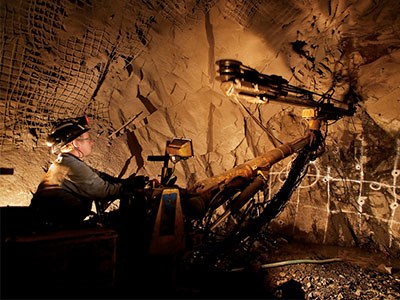In 2011, Ontario's mining supply and services sector contributed $3.9 billion to the province's gross domestic product, and sustained around 68,000 direct and indirect jobs, according to a new study published by the Canadian Association of Mining Equipment and Services for Export (CAMESE).
CAMESE managing director Jon Baird said the study's findings are historic, because economic contributions from the mining supply and services sector had never been studied to such a degree.
“Nothing was known, or next to nothing was known, about the economic impact of mining supply before this survey,” Baird said.
The association partnered with PricewaterhouseCoopers to analyze questionnaires it sent out to 913 supply and service companies across Ontario.
The pan-Ontario mining supply and services sector economic impact study determined 41,000 people in the province are directly employed by mining supply and services companies, while another 27,000 people rely on the sector indirectly, as suppliers or service providers themselves.
Around 78 per cent of the companies that responded to the survey reported doing some business outside of Ontario, while 70 per cent of respondents did business outside of Canada.
“There's a high export propensity,” Baird said. “And that's good.”
Around one third of company head offices were in Northern Ontario, with the highest number located in Sudbury.
Another 21 per cent of head offices were in the Greater Toronto Area, and the rest were scattered throughout the rest of the province.
But the CAMESE study was not the first to look at the mining supply and services sector.
In 2010, the Sudbury Area Mining Supply and Service Association (SAMSSA) collaborated with Doyletech Corporation to conduct in-person interviews with 150 companies to analyze the economic contributions of Northern Ontario's mining supply and service sector.
The study found the sector had an output of $5.6 billion from 500 companies that employed around 23,000 people.
According to the study, Sudbury represented the greatest share of that economic output with $3.9 billion and 13,800 mining supply and service sector jobs.
Foreign exports represented 19 per cent of the sector's sales, the study said. Five per cent of those sales were to the United States.
Baird said the SAMSSA study, while important, followed different parameters than his organization's report, and didn't include the sector's gross domestic product contributions.
Including GDP and tax contributions from the mining supply and services sector helps make the case to various levels of government that the sector is worth supporting, said Baird.
The CAMESE study was not the only recent report to make the case for government investment in the mining sector.
In October, University of Toronto economics professors Peter Dungan and Steve Murphy published a report called “An Au-thentic Opportunity: The Economic Impacts of a New Gold Mine in Ontario,” commissioned by the Ontario Mining Association.
The study determined that a $600-million underground gold mine in Northern Ontario would lead to 620 direct jobs with an average compensation of $145,500 per year per worker.
The same mine would add $150 million to Ontario's gross domestic product each year, and would lead to $100 million in government revenues each year, while in production.
The Ontario Mining Association had previously done a similar study in 2007, to explore the impact of a base-metal mine in an established mining centre like Sudbury or Timmins.
“We thought it was time to do a gold study,” said Peter McBride, the association's manager of communications. “There’s a huge number of gold projects on the books in Ontario.”
McBride said the study should help lend credibility to the economic cases for investments in gold mines.
“All we can say is here's the opportunity of what it can mean,” McBride said.
The Ontario Mining Association also put together an infographic with the report's findings to inform students and regular Ontarians about the benefits they see in mining investments.
“The numbers speak well enough for themselves,” McBride said.




